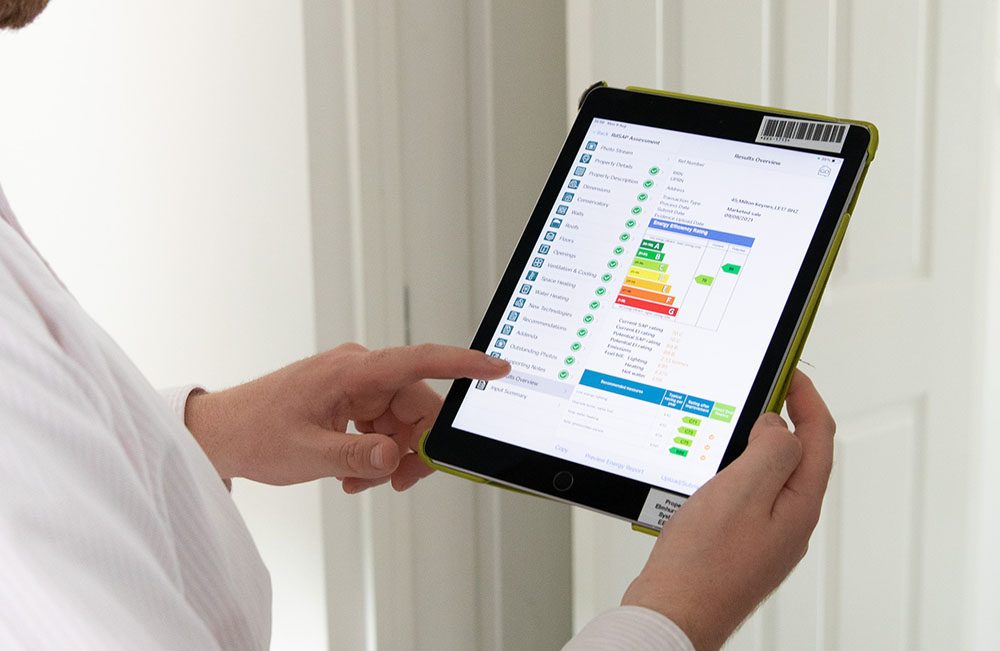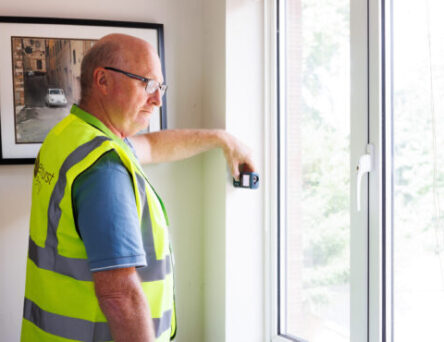Beyond Box-Ticking: The Scientific Foundation of RdSAP and EPCs
The claim that Energy Performance Certificate (EPC) assessments amount to little more than a “box-ticking exercise” is a familiar one—frequently voiced by media commentators, property owners, and even some within the industry.
Much of this criticism is rooted in the assessments’ reliance on standardised data inputs, a direct consequence of the methodology behind them: the Reduced Data Standard Assessment Procedure (RdSAP). RdSAP, the approved methodology for assessing the energy performance of existing residential buildings, was designed to ensure consistency and usability across the UK’s diverse housing stock.
Yet, with over three decades in the industry, Elmhurst recognises that this methodology is far more than the sum of its parts; it is grounded in decades of scientific research, technical progress, and strategic policy alignment. While the methodology is not without its limitations, it represents a carefully balanced approach, one that aims to deliver practical, scalable assessments without losing too much accuracy in the process.

A Brief History of RdSAP
RdSAP was created in 2005 as a simpler, lower-cost version of the UK’s Standard Assessment Procedure (SAP). Its development was driven by the need to implement the EU Energy Performance of Buildings Directive (EPBD), which required EPCs for all homes when sold or rented by 2007. At that time, SAP was already used for new-build compliance, but a ‘standardised’ practical method was needed for existing homes where detailed construction data might be unavailable.
Elmhurst Energy and National Energy Services (NES) (now Sava) worked with the Building Research Establishment (BRE) to merge their proprietary energy rating methodologies into what became RdSAP.
Since its launch in 2005, RdSAP has undergone a number of updates to refine its methodology and expand its capabilities, while staying aligned with the main SAP framework. These revisions typically introduced incremental improvements such as: updated default values, new options for inputs, and clarifications in conventions (assessment rules).
The upcoming release of RdSAP 10, scheduled for June 15th, promises to be the most significant update to date, introducing major improvements to the accuracy and robustness of the methodology. The latest version will feature expanded data collection, updated assumptions, and the introduction of new technologies and measures. These enhancements ensure better alignment with modern building practices and play a key role in supporting the transition to net-zero carbon homes.
The Science behind RdSAP
RdSAP is built on a robust foundation of building physics and is powered by decades of practical research into how buildings perform in the real world. It draws on the same scientific principles as SAP developed by the BRE to assess a home’s energy performance. While SAP was originally based on the BRE Domestic Energy Model (BREDEM), it has since developed into a standalone methodology with its own set of algorithms and assumptions.
At its core, RdSAP operates as a building physics engine; it estimates how energy flows through a dwelling by accounting for key factors such as heat loss, insulation levels, ventilation, and heating system efficiency.
What makes RdSAP distinct is its ability to assess existing homes using a streamlined set of data inputs, making it faster and more practical than full SAP assessments. It was purposefully designed to minimise disruption for homeowners, avoiding the need for invasive inspections like opening up walls or floors. Instead, it applies science-informed assumptions to fill in the gaps where data cannot be directly observed.
During a standard site visit, assessors collect essential information such as the home’s age, type, floor area, and heating system. For elements that cannot be verified visually, RdSAP relies on two key tools: defaults and conventions, both underpinned by extensive technical research.

Defaults/Assumptions
Defaults/Assumptions are derived from national housing surveys, BRE datasets, and construction-era standards. For instance, a property’s construction year is used to estimate its likely insulation levels and thermal performance. Older homes are typically assigned higher (less efficient) U-values, while newer homes benefit from lower values due to modern building regulations. If you look at an EPC and it says ‘As-Built’ or ‘Unknown’ this is where a default/assumption has been applied.

Conventions
Conventions guide Domestic Energy Assessors (DEAs) in how to consistently interpret and input data—such as how to treat inaccessible lofts or mixed construction types. These ensure that the data gathering process is reliable and standardised across the industry.
To maintain consistency across all assessments, RdSAP also applies standard operating conditions for climate, heating patterns, and occupancy. These controlled assumptions help ensure that ratings reflect the property’s efficiency—not the habits of its current occupants.
Technical Assumptions in RdSAP
Several technical assumptions underlie the RdSAP calculations:
RdSAP uses pre-set values (from official data) to estimate how well walls, roofs, and floors retain heat, based on the building’s age and construction type. Unless the assessor can confirm upgrades—like added insulation or modern glazing—it assumes the home performs as it would have when first built.
If the assessor knows the exact boiler or heating system model, its real efficiency can be used. If not, RdSAP uses typical efficiency values based on the system’s type and age. These standard values are built into the software.
The current version of RdSAP doesn’t require air pressure testing (unlike new builds). Instead, it estimates heat loss from draughts based on the building’s age and features, such as chimneys and glazing. Standard allowances are made for ventilation systems and extractor fans.
Yet, following the update to RdSAP on June 15th 2025, assessors will be able to enter air pressure test results into RdSAP, as well as model mechanical and natural ventilation more accurately.
RdSAP assumes standard heating patterns and hot water use, not real-life behavior. For example, it assumes living rooms are heated to 21°C and other areas to 18°C during the winter. This helps give a consistent energy rating that isn’t influenced by how the current occupants live.
While the method is mostly the same across the UK, RdSAP does adjust for local climate by using data like sunlight and heating demand in each region. This helps reflect how the home performs in its specific location.
A Fine Balance Between Usability and Accuracy
The driving rationale behind RdSAP’s design is to balance usability with accuracy. For existing homes, it is often impractical or costly to collect every piece of data required for a full SAP calculation.
Many construction details can be hidden (within walls, floors, etc.), and homeowners may not have records of insulation or exact dimensions. Thus, RdSAP deliberately limits the required data to what a trained DEA can reasonably gather during a site visit. By reducing data needs, RdSAP has made nationwide EPC assessments feasible and affordable, enabling energy ratings for virtually every home.
This efficiency, however, comes at the cost of some loss of accuracy or granularity. By using generic defaults, RdSAP can deviate from a dwelling’s true performance if that property is atypical. RdSAP does acknowledge this trade-off and is designed to keep results within acceptable margins. RdSAP’s results generally fall close to those of a full SAP calculation given the same property.
As mentioned previously, the assumptions/defaults used in RdSAP aren’t just guesswork and are in fact derived from decades of extensive research and modelling based on national housing data.
Unjust Criticism
Elmhurst’s Managing Director, Stuart Fairlie, was at Elmhurst during the development and inception of RdSAP and its predecessors use for enery peformance calcualtions back in the early 2000’s, and believes that some of the criticism comes from a lack of understanding of the methodology:
“From a homeowners perspective, it can be quite easy to overlook and criticise EPC assessments. Many will only see the output, the EPC itself, and don’t really understand the amount of work and building physics that has gone into creating that document.
However, the EPC is in fact generated from a combination of robust evidence collection, and decades of building physics/research, brought together by accredited professionals who follow practical assessment conventions. This ensures that the energy performance of millions of homes across the UK can be measured and is workable at scale.
The fact that the software makes the life easier for an energy assessor is often misunderstood. Just one example of this in the data collection where the software asks a series of question about construction type, age of property, insulation, dry lining and wall thickness, which look up the derived U-value from ‘behind the scenes tables’ with decades of research, seems to be lost in the narrative.
This methodology is the baseline of a home’s energy performance, of course it can and should always be improved to keep up with prices, emissions and technologies; but it is now time for us all, as experts, to help use this baseline, to support informed decisions about whether or not to improve the home’s energy efficiency—and if so, how best to do it moving forward.”
He goes on to say that although RdSAP is not perfect it is becoming increasingly accurate:
“I’m not really a fan of the name ‘Reduced-data’ SAP which implies that the methodology is a lesser version of its ‘big brother’. With each update made to the methodology, we are in fact seeing more and more data inputs included, which is putting RdSAP closer to what we are seeing with full SAP [close to 200 data points]. I would certainly suggest at least a name change to existing home SAP or something similar.”
